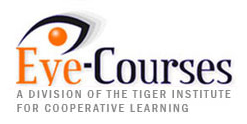COA Prep Course

Course Overview
This
course includes a thorough review of the topics covered on the COA
certification exam, a practice COA test, and an answer key. The cost of
this course is $150.00. It is intended for beginning and intermediate
levels.
This
course is not approved for Group A JCAHPO credits. Course material is
based on the instructors’ interpretation of the content areas outlined
in the JCAHPO Criteria for Certification and Recertification
handbook, and the instructors of this review course have no direct
knowledge of the specific certification examination questions.
This
course is designed to review and prepare you for taking the Certified
Ophthalmic Assistant (COA) certification test. The course details the
information listed on the JCAHPO examination study guide in content
areas 1-6, which are the content areas covered on the COA test.
This course contains the following information:
Detailed information reviewing content areas 1-6 on the JCAHPO examination study guide COA Practice test (225 questions in the same multiple choice format used in the COA certification exam) Answer key to all questions on the COA practice testTime Line suggested study guide to help you organize your study time
After completing this section the student should be able to do the following:
- Describe the difference between signs and symptoms
- Identify 4 questions to ask when triaging patients
- List pertinent categories in documenting a complete patient history
- Identify 3 diseases that may be hereditary which are important to document in family history
- List several medications that are used to treat the following- Diabetes, Hypertension, Asthma
- Describe
which ocular medications may be related to Sulfa drugs and why an
allergy to Sulfa would preclude use of these drugs - Give an overview of what the numbers in visual acuity measurements mean and how they relate to each other
- Describe
what the different methods of measuring visual acuity are including:
Snellen letter chart, Tumbling E�s chart, Pictures chart, Central
Steady Maintained, Fix and follow, Reacts to light/threat, Count
fingers, Hand motions, and Light perception - Identify how to record visual acuity
- Describe why calibration is important for visual acuity measurements
- Describe how to perform the D15 color test
- Identify what the Ishihara plates are used for
- List the steps to performing Lensometry including proper documentation of a prescription
- Identify aphakic prescriptions
- Define what A scan biometry measures
- Describe how and when to perform Exophthalmometry, Amsler grid, and Schirmer testing
- Describe what an APD would look like
- Identify methods used to evaluate the anterior chamber depth
- List indications for ocular shields and dressings
- Define
the following as it pertains to ophthalmology: drops, solutions,
suspensions, ointments, injections, systemic medications - List the steps in measuring interpupillary distance both monocularly and binocularly
- List common lens materials and 3 advantages/disadvantages to each
- Identify the difference between multifocal and single vision lenses
- List important items to understand when assisting the physician in minor surgery
- Define Applanation tonometry and list instruments used to perform it
- List the steps to perform Goldmann applanation tonometry
- Identify items that may cause error in measuring IOP
- List acceptable methods to cleaning and disinfecting ophthalmic instrumentation and equipment
- Identify instruments which should only be repaired by a professional
- Describe the general anatomy and physiology of the Endocrine, Cardiovascular, Nervous, and Respiratory systems
- List the bones that make up the orbit
- List the intrinsic and extrinsic muscles of the eye
- Identify the basic eyelid structures and their functions
- Label the drainage system and its parts
- Identify the layers of the cornea
- Identify the anterior chamber
- Describe the anatomy of the uvea including the iris, cilliary body, and choroid
- Describe some common problems with the parts of the eye anatomy that are listed above
- List common ophthalmic complications from Diabetes, Hypertension, Atherosclerosis, Blood disorders, Cancer, and infections
- Define Hyperopia, Myopia, Astigmatism, and Presbyopia
- List causes of red eye
- Describe the recommended procedure for an eye emergency if the physician is out of the office
- Calculate visual acuity measurements in metric terms
- List acceptable methods of sterilization and disinfection
- Define Contamination and Sanitation
Here is what some ophthalmic personnel who took this course had to say:
“Best comprehensive review I have ever seen.” M.K., COT
“Very nice course – organized and easy to utilize- It’s a convenient way to obtain much needed credits. Thanks” C. B., COT
“the study material was well presented, allowing me to cover all the necessary information needed first hand.” N.M., COMT
“Very, very helpful.” S.S., COA
“Great review for me.” A.L., COA
“Good review!” G.R., COT
“I think you did a nice job of covering the basics.” S.H., Clinical Supervisor
“I will be taking my test tomorrow …I think I will pass. Thank for this course very helpful” J.H., COA
“It’s a very useful program.” C.C., COA
“This is very helpful. Thank you very much!” Y.S., COT
